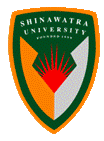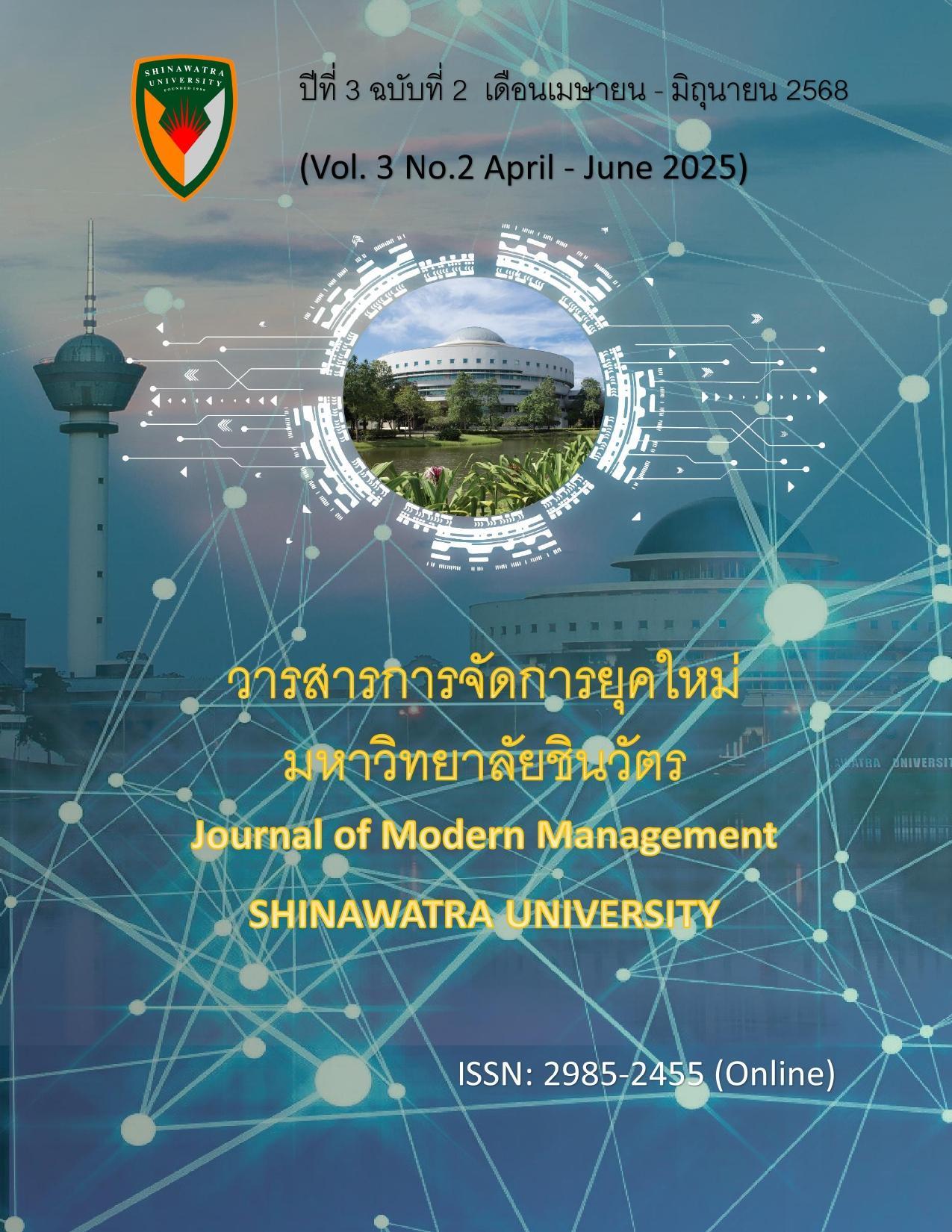มองความสัมพันธ์ระหว่างราชวงศ์อตโตมานและราชวงศ์หมิงผ่านบันทึกโบราณ “หมิงสือลู่”
คำสำคัญ:
Ming Shilu, Ottoman Empire, Ming Dynastyบทคัดย่อ
บทความนี้ศึกษาประวัติศาสตร์ความสัมพันธ์ระหว่างจักรวรรดิออตโตมันและราชวงศ์หมิงผ่านการวิเคราะห์เอกสารโบราณ หมิงสือลู่ โดยมุ่งเน้นการสำรวจการรับรู้ของราชวงศ์หมิงต่อจักรวรรดิออตโตมันในฐานะตัวแทนของโลกอิสลาม ผลการศึกษาพบว่า หมิงสือลู่ บันทึกข้อมูลเกี่ยวกับจักรวรรดิออตโตมันตั้งแต่ศตวรรษที่ 14 ถึง 16 โดยใช้ชื่อเรียกจักรวรรดิออตโตมันถึง 5 ชื่อ ได้แก่ ลู่หมี่, หรง, หรงตี้, หรงตี้เมี่ยน, และโหรวหมี่ พร้อมทั้งบันทึกพระนามของสุลต่านออตโตมันสองพระองค์ คือ สุลต่านมุรอดที่ 2 และสุลต่านสุลัยมานที่ 1 การศึกษานี้ยังพบความคลุมเครือในด้านการใช้คำศัพท์ซึ่งสะท้อนถึงการรับรู้และมุมมองที่แตกต่างของราชสำนักหมิงต่อจักรวรรดิออตโตมัน นอกจากนี้ยังใช้เอกสารเสริมจากแหล่งอิสลามศึกษาและแผนที่โบราณ เช่น เมิ่งกู่ ซานชุ่ย ตี้ทู และ ซีหยวี๋ ทู่ตี้ เหรินอู่ เพื่ออธิบายความคลุมเครือและความแตกต่างในการบันทึกข้อมูลดังกล่าว ผลการศึกษานี้ช่วยเสริมสร้างความเข้าใจเกี่ยวกับความสัมพันธ์ระหว่างจีนและจักรวรรดิออตโตมันในบริบทของการทูต การค้า และการแลกเปลี่ยนวัฒนธรรม พร้อมทั้งเน้นย้ำบทบาทสำคัญของเอกสารราชการจีนในการบันทึกความสัมพันธ์ระหว่างรัฐและมหาอำนาจในยุคโบราณ
เอกสารอ้างอิง
Akgündüz, A., & Öztürk, S. (2008). Al-dawlah al-'Uthmānīyah al-majhūlah [The unknown Ottoman state]. OSAV.
Aydin, M. A. (1999). Al-dawlah al-'Uthmānīyah: Tārīkh wa-ḥaḍārah [The Ottoman state: History and civilization]. IRCICA.
Berthier, L. (1995). Khitāb al-Sulṭān Sulaymān al-Qānūnī ilá al-Malik Frānswā al-Awwal [Letter from Sultan Suleiman the Magnificent to King Francis I]. Al-tārīkh al-ijtimā'ī (Toplumsal Tarih), 17(5), 43-45.
Cao, W. (Ed.). (1995). Zhongguo gudai ditu ji: Ming dai [An atlas of ancient maps in China: The Ming Dynasty]. Wenwu.
Chen, Q. (2015). Mosques of the maritime Muslim community of China [Doctoral dissertation, SOAS University of London].
Dina, S., Amani, M., & Saad, M. (2022). Dirāsah ātharīyah wa-fannīyah li-ṭughrāwāt 'alá al-nasīj al-'Uthmānī wa-usrat Muḥammad 'Alī fī ḍaw' majmū'ah lam yusbaq nashruhā maḥfūẓah fī matḥaf al-Amīr Muḥammad 'Alī Tawfīq bi-al-Manīl [Archaeological and artistic study of Ottoman textile tughras and Muhammad Ali's family]. Majallah Kulliyat Āthār, 11(25), 314-317.
Harb, M. (2012). Al-'Uthmānīyūn fī al-tārīkh wa-al-ḥaḍārah [The Ottomans in history and civilization]. Dār al-Qalam.
Hu, F. (2008). Der Islam in Shaanxi: Geschichte und Gegenwart [Islam in Shaanxi: History and present] [Doctoral dissertation, University of Bonn]. https://nbn-resolving.org/urn:nbn:de:hbz:5-16136
İnalcık, H. (1973). The Ottoman Empire: The classical age 1300-1600. Phoenix Press.
Liu, W. (1998). Da Ming lü [Great Ming code]. Law Press.
Liu, X., Mattariganond, D., & Narasaj, B. (2019). Migration of Yunnan people into Myanmar from ancient times to the 19th century. Journal of Mekong Societies, 15(1), 18-39.
Liu, Y. (2015). Cities and routes of Ferghana in the "Xiyu tudi renwu lüe" and the "Xiyu tudi renwu tu". Journal of Asian History, 49(1-2), 229-251.
Ming Shilu [Veritable records of the Ming Dynasty]. (1962). Institute of History and Philology.
Muslim. (1955). Ṣaḥīḥ Muslim. Matba'at 'Īsá al-Bābī al-Ḥalabī. Shuge Digital Library. (n.d.). Mongolian landscape map [eBook]. https://old.shuge.org/ebook/menggu-shan-shui-di-tu/
Taqoush, M. S. (1995). Al-'Uthmānīyūn min qiyām al-dawlah ilá al-inqilāb 'alá al-khilāfah [The Ottomans from the establishment of the state to the coup against the caliphate]. Dār al-Nafā'is.
The Metropolitan Museum of Art. (n.d.). Map of the Silk Road. https://www.metmuseum.org/art/collection/search/449533
Wang, W. (2022). The evolution of Chinese Muslim's classical learning and schools in the Ming and Qing dynasties. Religions, 13(6), 553. https://doi.org/10.3390/rel13060553
Yihao, Q. (2021). Mirroring Timurid Central Asia in maps: Some remarks on knowledge of Central Asia in Ming geographical documents. Acta Orientalia Academiae Scientiarum Hungaricae, 74(1), 79-107. https://doi.org/10.1556/062.2021.00004
ดาวน์โหลด
เผยแพร่แล้ว
ฉบับ
ประเภทบทความ
สัญญาอนุญาต
ลิขสิทธิ์ (c) 2025 วารสารการจัดการยุคใหม่ มหาวิทยาลัยชินวัตร

อนุญาตภายใต้เงื่อนไข Creative Commons Attribution-NonCommercial-NoDerivatives 4.0 International License.





